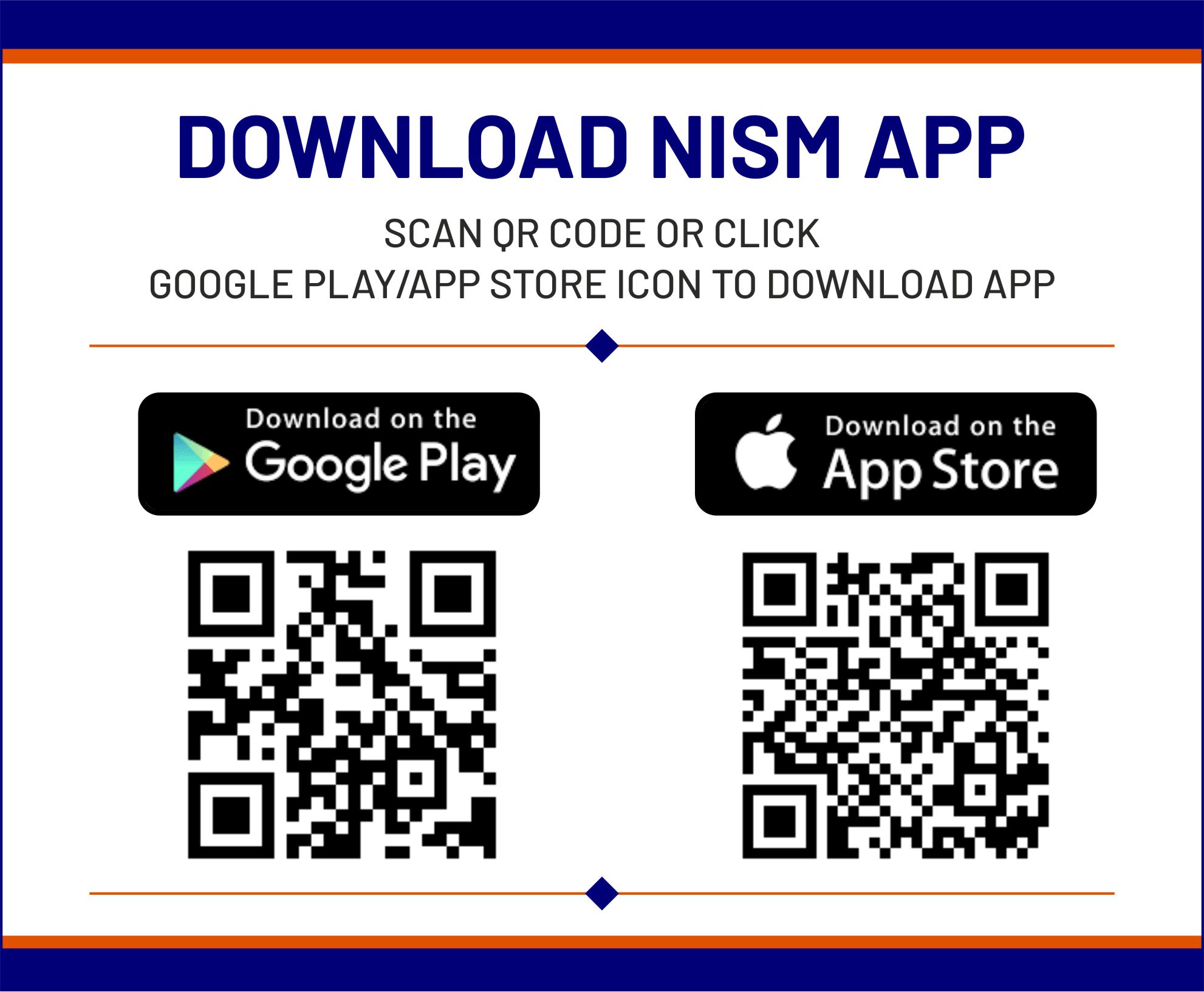Curriculum (Financial Education)
NISM Series XVIII – Financial Education Certification Examination
Curriculum
1. Introduction
1.1. Need for Financial Literacy.
1.2. Role of financial education in achieving financial well being.
1.3. Importance of Financial Planning.
2. Key Concepts in Personal Finance
2.1. Key concepts of Personal Finance: Savings, Investment, Borrowing, Income and Expenses, Surplus/Deficit, Assets and Liabilities, Inflation, Time Value of Money, Active and Passive Income, Instant and Delayed Gratification, etc.
2.2. Power of compounding and Rule of 72.
2.3. Concept of Rupee Cost Averaging.
3. Financial Planning and Budgeting
3.1. Define Financial Planning.
3.2. Financial Planning Process.
3.3. Steps involved in Financial Planning Process.
3.4. SMART financial goals.
3.5. Three pillars of investments.
3.6. Concepts of risk and return.
3.7 Budgeting and its importance in financial planning.
4. Savings Related Products
4.1. Types of bank accounts: Savings account, Current account, fixed deposits, recurring deposits.
4.2. Various modes of transfer through banking channel: NEFT, RTGS, IMPS, UPI.
4.3. Account opening process and importance of KYC norms.
4.4. Do’s and don’ts while using digital payments.
4.5. Credit cards and Debit cards.
4.6. Role of Reserve Bank of India.
5. Investment in Securities Market
5.1. Investment avenues offered by Securities Markets.
5.2. Primary Market and Secondary Market
5.3. Operational aspects of securities markets: placement of orders, contract note, pay-in and pay-out, trading and settlement cycle.
5.4. Various risks involved in investing in securities markets.
5.5. Benefits of investing through Mutual Funds.
5.6. Mutual Fund categorization and product labeling of mutual funds.
5.7. Systematic Investment Plan (SIP) and its advantages.
5.8. Role played by Commodity Derivatives markets in hedging of commodity price risk.
5.9. Products traded in Commodity Derivatives Exchanges and their usefulness to various stakeholders.
6. Insurance related Products
6.1. Role of Insurance as risk management tool.
6.2. Various types of Insurance products and their key features.
6.3. Regulatory role of IRDAI.
7. Pension, Retirement and Estate Planning
7.1. Importance of Pension and its role in providing financial security in old age.
7.2. National Pension System (NPS).
7.3. Ties-I and Tier-II accounts of NPS.
7.4. Investment options under NPS.
7.5. Key features of retirement planning.
7.6. Estate Planning and importance of nomination, will and PoA.
8. Borrowing Related Products
8.1. Borrowing, Collateral and Equated Monthly Installments (EMI).
8.2. Documents required for obtaining Loans.
8.3. Various loan products offered by Financial Institutions and their key features.
8.4. 5Cs of Credit.
8.5. Credit Information Organizations and Credit Score.
9. Government schemes for various savings and investment options
9.1. Salient features of various Government Schemes.
9.2. Insurance schemes of Government of India and their important features.
9.3. Pension schemes of Government of India and their important features.
9.4. Borrowing schemes of Government of India and their important features.
10. Tax Savings Options
10.1. Concept of Income Tax.
10.2. Various deductions allowed under Income Tax Act.
11. Caution against Ponzi Schemes and unregistered Investment Advisers
11.1. Ponzi schemes and their broad characteristics.
11.2. Various financial frauds: Investment frauds, Lottery frauds, Mass marketing frauds, Credit card frauds.
11.3. Do’s and don’ts while dealing with Investment Advisers.
12. Grievance Redressal Mechanism
12.1. SEBI SCORES.
12.2. Grievance Redressal mechanism in Securities Markets.
12.3. Grievance Redressal mechanism in Banking industry.
12.4. Grievance Redressal mechanism in Insurance industry.
12.5. Grievance Redressal mechanism in Pension industry.
12.6. Grievance Redressal Agencies and the category of complaints they try to resolve.

